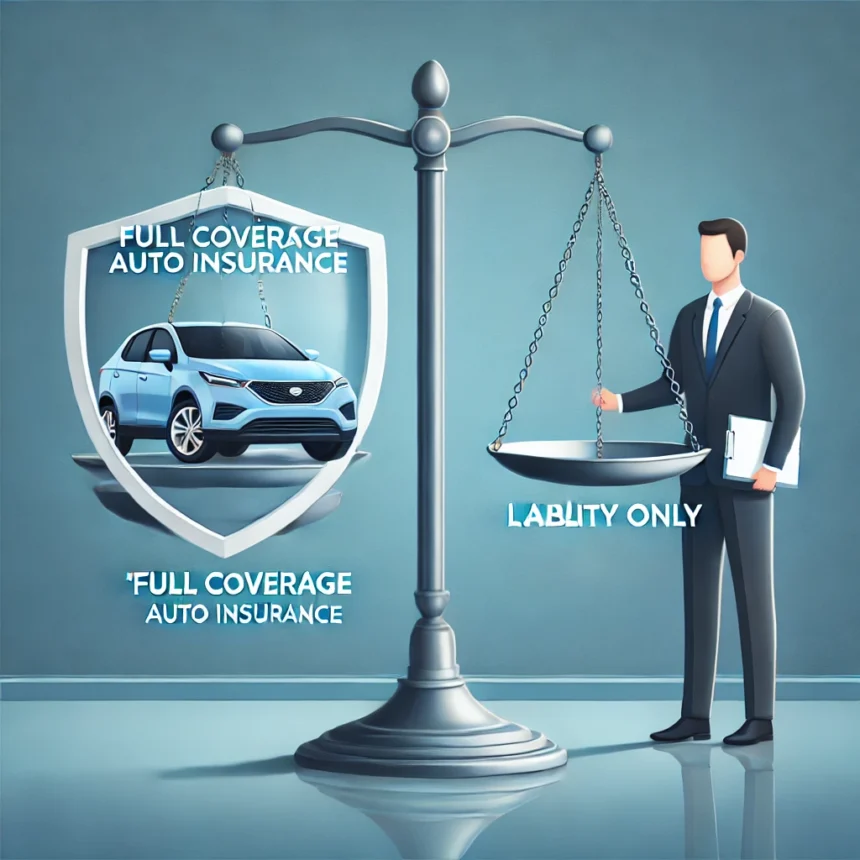Wondering if full coverage auto insurance is worth it? Discover expert advice, real-life examples, and key questions to decide what’s best for your car and your wallet.
What Does “Full Coverage” Really Mean?When Full Coverage is Non-Negotiable1. Your Car is Financed or Leased2. You’re Driving a New(ish) Car3. You Can’t Afford a Surprise $5,000 RepairWhen You Might Not Need Full Coverage1. Your Car is Older Than 10 Years (or Worth Less Than $4,000)2. You Have Robust Savings3. You Rarely DriveThe Emotional Cost of Underinsuring5 Questions to Ask Yourself (Before Dropping Full Coverage)Expert Tips to Save Without Sacrificing SecurityThe Verdict: It’s About Your Life, Not a FormulaIntroduction: The Safety Net You Can’t See—Until You Need It
Picture this: You’ve just driven your new car off the lot, heart swelling with pride. The salesman insists on full coverage, but your gut whispers, “Is this worth the extra $100 a month?” Fast-forward two years: A hailstorm dents your hood, or a fender bender leaves your bumper crumpled. Suddenly, that monthly premium feels like a lifeline.
The question isn’t just about money—it’s about balancing fear and practicality. Let’s unravel the mystery of full coverage auto insurance, so you can decide what’s right for your wallet and your peace of mind.
What Does “Full Coverage” Really Mean?
Contrary to its name, “full coverage” isn’t all-encompassing. It’s a blend of three core protections:
- Liability Insurance: Covers damage/injuries you cause to others (legally required in most states).
- Collision Insurance: Pays for repairs to your car after an accident, regardless of fault.
- Comprehensive Insurance: Protects against non-collision disasters (theft, fire, floods, falling objects).
What it doesn’t cover: Routine wear-and-tear, personal belongings inside the car, or injuries to you (that’s what medical payments/PIP coverage is for).
When Full Coverage is Non-Negotiable
1. Your Car is Financed or Leased
Lenders and leasing companies require full coverage to protect their investment. Skipping it could mean violating your contract—and risking repossession.
2. You’re Driving a New(ish) Car
The average new car loses 20% of its value in the first year. Full coverage shields you from sudden financial blows while your car is still depreciating.
Real-Life Example:
Sarah’s 2023 SUV was sideswiped by a hit-and-run driver. Without collision coverage, she’d have paid 8,000outofpocket.Instead,herdeductiblewas500.
3. You Can’t Afford a Surprise $5,000 Repair
If replacing your car tomorrow would devastate your savings, full coverage acts as a financial airbag.
When You Might Not Need Full Coverage
1. Your Car is Older Than 10 Years (or Worth Less Than $4,000)
Rule of Thumb: If annual premiums + deductible exceed 10% of your car’s value, liability-only may save money.
Real-Life Example:
Mike dropped collision on his 2010 sedan (worth 3,500).Hesaves600/year—money he stashes for future repairs.
2. You Have Robust Savings
If you’re comfortable covering repairs or a replacement car, you might gamble on liability.
3. You Rarely Drive
Low-mileage drivers (under 7,500 miles/year) face fewer risks. Pair liability with usage-based insurance for extra savings.
The Emotional Cost of Underinsuring
Insurance isn’t just about spreadsheets—it’s about sleeping at night. Imagine:
- A tree crushes your car during a storm.
- A break-in leaves your windows shattered.
Without comprehensive coverage, you’re left scrambling, stressed, and financially strained.
5 Questions to Ask Yourself (Before Dropping Full Coverage)
- “Could I replace my car tomorrow without hardship?”
- “Does my loan/lease require full coverage?”
- “How common are accidents/theft in my area?”
- “What’s my car’s current value?” (Check Kelley Blue Book)
- “How much stress am I willing to take on?”
Expert Tips to Save Without Sacrificing Security
- Raise Your Deductible: A 1,000deductiblevs.500 could cut premiums by 15-30%.
- Bundle Policies: Pair auto + home/renters insurance for up to 25% off.
- Ask About Discounts: Safe driver, anti-theft devices, or even paying annually.
- Reassess Yearly: As your car ages, adjust coverage.
The Verdict: It’s About Your Life, Not a Formula
Full coverage isn’t a one-size-fits-all answer. It’s a choice shaped by:
- Your car’s value
- Your financial resilience
- Your tolerance for risk
Choose full coverage if: Your car is new, financed, or irreplaceable in your daily life.
Choose liability if: Your car is old, paid off, and you’re prepared for worst-case scenarios.
Conclusion: Protect More Than Just Metal—Protect Your Peace
Your car isn’t just a vehicle—it’s your commute, your freedom, your independence. Whether you opt for full coverage or liability, let your decision be rooted in self-compassion, not fear. Revisit your policy yearly, consult your agent, and remember: The best coverage is the one that lets you drive with confidence, knowing you’re prepared for life’s unexpected detours.
Keywords: full coverage auto insurance, do I need full coverage, liability vs full coverage, when to drop full coverage, car insurance advice
Note: Insurance needs vary by individual. Consult your agent to tailor coverage to your unique situation.
Call to Action: Review your policy today—your future self will thank you.
